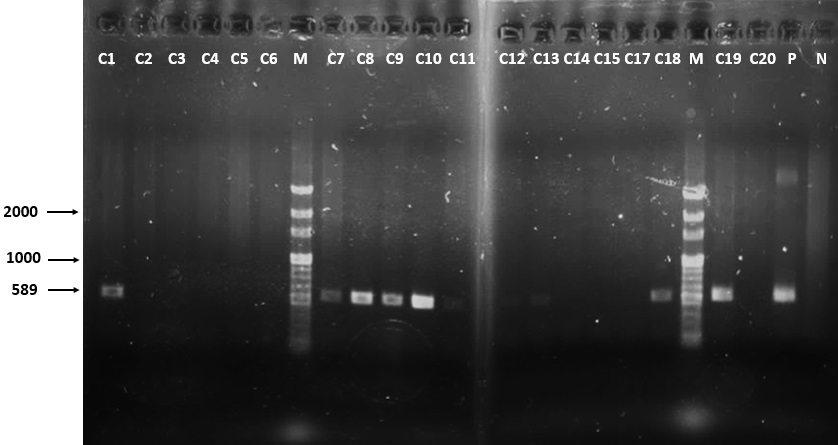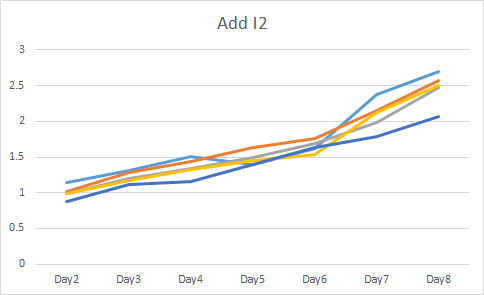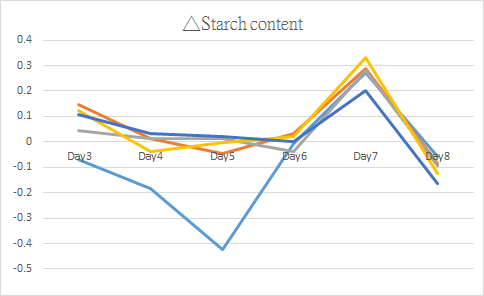Part:BBa_I742157
crtZ (beta-carotene hydroxylase) coding sequence
Coding sequence for crtZ (beta-carotene hydroxylase) from Pantoea ananatis (formerly Erwinia uredovora) DSMZ 30080 (ATCC 19321). Accession: D90087. Part of the carotenoid biosynthesis pathway. Converts beta-carotene to the yellow pigment zeaxanthin.
Sequence and Features
- 10COMPATIBLE WITH RFC[10]
- 12COMPATIBLE WITH RFC[12]
- 21COMPATIBLE WITH RFC[21]
- 23COMPATIBLE WITH RFC[23]
- 25COMPATIBLE WITH RFC[25]
- 1000COMPATIBLE WITH RFC[1000]
Team NYMU-Taipei 2017 : Express CrtZ gene in Synechoccocus elongatus PCC7942 through gene recombination
Improvment
As we know, most of green plants produce zeaxanthin as an intermediate in carotenoid pathway. However, some cyanobacteria lack some genes and cannot produce zeaxanthin, such as Synechococcus elongatus PCC 7942. Therefore, in NYMU-Taipei 2017 team's project, we decide to express CrtZ gene in Synechoccocus elongatus PCC7942, thus we construct a vector, pPIGBACK (BBa_K2350009), which is able to be transformed into Synechoccocus elongatus PCC7942 and process double-crossingover homologous gene recombination. We fuse CrtZ with the intrinsic promoter of Rubisco large subunit-PrbcL (BBa_K2350003), which regulates the expression of the most abundant proteins in photosynthetic species and has been proven to have a high activity to express foreign genes. Lastly, we construct PrbcL-CrtZ with pPIGBACK to express yellow pigment in Synechoccocus elongatus PCC7942.
In conclusion, CrtZ gene used in our project was a part released in iGEM (BBa_I742158). We have successfully construct this part on our special design backbone pPIGBACK so that it can express in our microalgae and result in yellow microalgae.
Result
The right one of Figure 1 is wild type Synechococcus elongatus PCC 7942, the left one was transformant with BBa_K2320022. Obviously, the left one was more yellow than the right one. It proved that CrtZ was successfully transformed to PCC7942 and lead to zeaxanthin. See Figure 1.
Figure 1
Figure 2 is pPIGBACK-CrtZ transformants electrophoresis result. C1~C20 represents the pPIGBACK-CrtZ transformant clone 1 to clone 20, and M represnets 1 kb marker. Transformation efficiency of pPIGBACK-CrtZ is 11.4 transformants per μg DNA, and correctness is 52% (10/19), which is quite efficient because the successful rate of gene double-crossingover homologous recombination is low. See Figure 2.
Figure 2
Figure 3 is cell number, and Figure 4 is the starch content. See Figure 3 and Figure 4.
Figure 3
Figure 4
Figure 5 is starch content per cell, and Figure 6 is delta starch content compared with days. In Figure 6, the starch content change per cell of transformants are more than wild type, and proved that photosynthesis of some transformants were comparable to or more efficient than wild type. See Figure 5 and Figure 6.
Fifure 5
Figure 6
| None |






